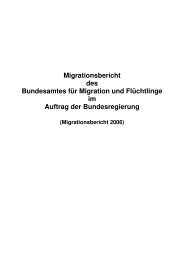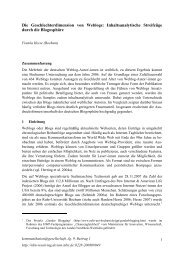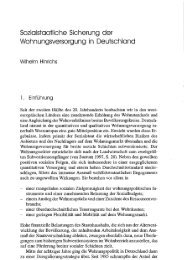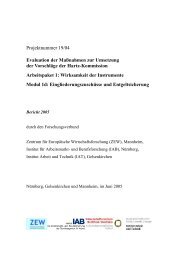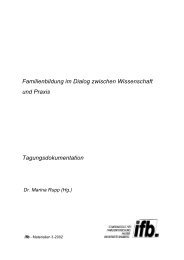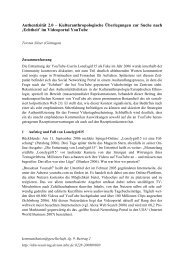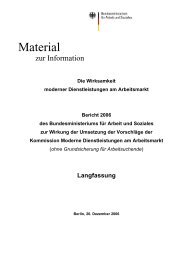Public Financial Management for PRSP - Deutsches Institut für ...
Public Financial Management for PRSP - Deutsches Institut für ...
Public Financial Management for PRSP - Deutsches Institut für ...
You also want an ePaper? Increase the reach of your titles
YUMPU automatically turns print PDFs into web optimized ePapers that Google loves.
<strong>Public</strong> <strong>Financial</strong> <strong>Management</strong> <strong>for</strong> <strong>PRSP</strong> Implementation in Malawi<br />
In principle, the responsibilities of MoF and MEPD are there<strong>for</strong>e clearly<br />
defined. However, coordination problems arise as MoF sometimes tends to<br />
impose its own priorities. The following section presents the coordination<br />
mechanism between MoF, MEPD and the sectors, by using PSIP as an example<br />
to illustrate where coordination problems arise..<br />
The <strong>Public</strong> Sector Investment Programme (PSIP) was introduced in the<br />
early 1980s as a 5-year rolling plan. Its main aim was to enable the MEPD to<br />
better exercise policy <strong>for</strong>mulation, planning and prioritisation between different<br />
development objectives and activities. When the MoF and the MEPD<br />
were merged into the new Ministry of Finance and Economic Planning<br />
(MoFEP) in 1997, the PSIP was abolished because it was assumed that it<br />
would be replaced by the MTEF (Durevall / Erlandsson 2005, 21). However,<br />
planning functions to necessary to implement the programme were never<br />
fully developed in the new ministry. Sector ministries started to sign contracts<br />
directly with donors without in<strong>for</strong>ming the MoFEP. Consequently, many<br />
projects were not included in the capital budget and the MoFEP knew little<br />
about ongoing investment projects in line ministries. As a result, development<br />
planning became difficult and intransparent and resources were not allocated<br />
in line with strategic priorities.<br />
Once the MoFEP was split up again <strong>for</strong> political reasons in 2003/2004, the<br />
PSIP was re-introduced to improve development planning. Today, the aim of<br />
the PSIP is to present a comprehensive list of all public projects in a five-year<br />
rolling plan. Line ministries are required to submit a prioritised list of project<br />
proposals to the MEPD <strong>for</strong> the next years. It is the responsibility of MEPD to<br />
select projects, prioritise them according to the resources available and to<br />
ensure that they are in line with national priorities as stated in the M<strong>PRSP</strong>.<br />
The PSIP is then sent to MoF to translate the ranked project list into the<br />
budget. The capital budget of the respective financial year should be identical<br />
with the first year of the PSIP.<br />
Cabinet guidelines state that only projects recorded in the PSIP should receive<br />
funding in order to ensure a clear link between the capital and the recurrent<br />
budget. In reality, however, the PSIP does not always provide the most<br />
important reference point <strong>for</strong> the allocation and prioritisation of the capital<br />
budget. Interview partners revealed that presidential orders or other political<br />
interferences from the top have in the past led to the implementation of projects<br />
that were not originally included in the PSIP. In the development budget<br />
<strong>for</strong> the fiscal year 2004/05, <strong>for</strong> instance, some PSIP projects were missing,<br />
German Development <strong>Institut</strong>e 111




